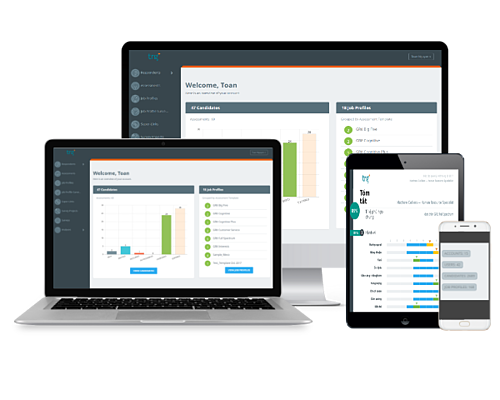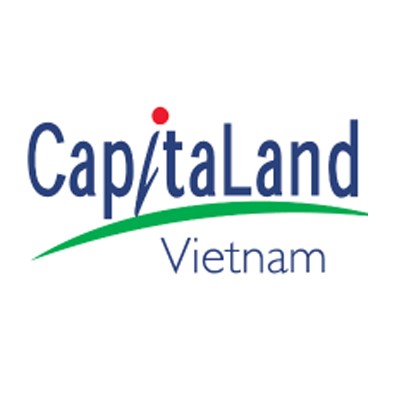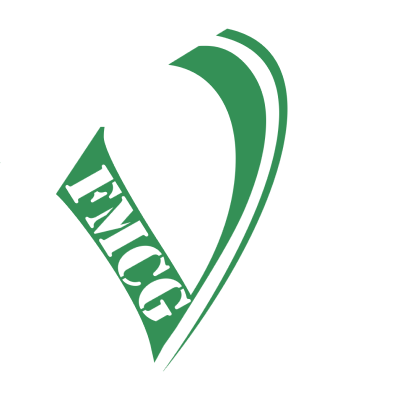"Disruption" has been a catchall word to define a period of transformative changes, whether it’s geopolitical instability, economic shifts, demographic changes, globalisation, digital transformation and many other disruptive forces.
As the world is holding itself up for an uncertain future, we are reminded of the ambiguity and complexity of the environment we are living in. However, this disconcerting period of major change has not just occurred recently. In fact, disruption of all kinds has always been with us at every turn of human history.
We frequently witness revolutionary movements to what we thought to be seemingly mundane activities, such as Uber changed transportation, or Netflix reshaped the landscape of traditional entertainment.
With each era of innovation, the proceeding models are obligated to recreate themselves.
Compared to previous revolutions, the pace of transforming is accelerating with the rise of macro technology forces. In the decade of 2020s, technology experts reckon that the digital disruptors may concern digital reality, blockchain, and cognitive technologies.
Constant change, uncertainty and ambiguity. These are the definition of the “new normal” in today’s workplace. Leaders are now being challenged to use visionary thinking, make insightful strategic decisions, and guide their teams to success amidst an ever-changing environment.
The current global economy is operating at a fast pace and enduring a high sense of competitiveness. This pressure has been causing traditional leadership to no longer be sufficient. Now, leaders must be proficient at taking on different roles and seeking for new identities.
To avoid being outdated and left behind, speed, agility and innovation become necessary parts of the business model, which appeals for leadership to be more proficient and agile.
Replacing the demanding and controlling traditional leadership approaches, the agile leadership model incorporates in its framework a large extent of collaboration, engagement, empowerment and communication, that serves to generate speed, proficiency, creativity, innovation and outcomes.
To help businesses survive and thrive when an event of disturbance hits, here are three phases of developing agile leaders at all levels:
This is termed as the ‘what’ phase; what is the information that employees need to obtain in order to improve their leadership skills, and more important, move through the development pipeline.
To build the competencies that are necessary for the needs of the company, this includes developing cognitive and social skills, learning to be tactful in communications and seeing things from others’ perspectives.
Assessments provide objective and valid information during this phase. A key leadership assessment method is the 360° feedback, an assessment which focuses on other perception about the employee’s leadership effectiveness.
The next phase is to interpret what the assessment reveals. The feedback recipients gain insight into how others perceive them and have an opportunity to adjust behaviours and develop leadership and management skills that will enable them to excel at being a leader anywhere.
This enables employees’ development as the assessment reveals unbiased insights from others of the potential’s leadership capabilities. The process gives people an opportunity to provide anonymous feedback to a coworker they might otherwise be uncomfortable giving.
The third phase termed ‘now what’ is essentially how to use the feedback gathered effectively, where both employees and managers identify steps that head towards the leadership development goals.
It is crucial to employees to understand the key factors that contribute exceptional leadership and encourage them to follow the development plan in place.
The 360° feedback tool is effective as it not only rate leadership skills and behaviours but offers a plan toward further development even though it is entirely dependent on the individual understanding. The information should be in a form and language they can understand and communicate with others, a common leadership language.
During the events of transformation, employee’s senses of security and motivation are highly vulnerable. As a leader, you need to manage this state of uncertainty with utmost clear directions.
“Great leaders know that managing uncertainty is a matter of putting themselves in the shoes of their employees and delivering the compassionate leadership they expect.” – Glenn Llopis, Forbes
Team management during this period does not merely mean giving directions; it also requires emphasising the visions of the organisation so that everyone collaboratively works towards the same goals.
As mentioned before, disruption has always occurred in our society. Therefore, to maintain a sustainable business, merely responding to disruption may not work in the long run. It is embracing and redefining the disruption that appears to be a more effective strategy.
“Lead through the change. Don’t let the change lead you.”
Leaders who constantly practice effective communication skill will help foster transparency. Transparency has always been perceived as the primary factor to build a congruous team, where every member understands their role and contributes towards a common goal. Moreover, transparency promotes utmost performance and conserves healthy morale within the workplace.
As important as it is, genuine and effective communication is even more demanded in times of disruption. During this period, things change at a breakneck speed. It is recommended that all updates, insights and results should be shared to ensure that everyone across the organisation is on the same page.
One of the key initiatives to apply the innovative culture to your organisation is empowerment:
As a result, they will come up with fresh ideas for the challenges your company is facing.
Good morale is overlooked and underrated for the most part in the workplace. Leadership styles that embrace a greater sense of empathy are appraised to be way more effective than the ones that fail to apply this. Empathy and high morale should be comprehended in any state, but in the meantime of tremendous changes, it should be emphasised even more than usual.
As aforementioned, disruption is not a passing trend for any business. Therefore, a well-planned set of tactics to prepare for disruption is highly necessary for helping your organisation to avoid any surprises.
The workforce is constantly evolving. Leaders need to seek for a larger extent of the present industries.
An example of a future workplace solution can be Hackathons, a method of gathering a core team to focus on working on a project or addressing a specific challenge in a short timeline. Hackathons are believed to enable opportunities to examine assumptions, develop and build networks.
As the coronavirus pandemic continues to sweep the globe like wildfires, showing no sign of slowing down, it is a tremendous social, cultural and business disruption that our generation has never faced. The whole community on the global scale is redirecting our lives’ routines, reinventing business models, and re-orienting our society at such a rapid pace that we have never thought it would be possible, even the digital disruption happened a few years ago has nothing to compare.
We as humans are adapting to find safety and opportunity during this challenging time in four ways:
Businesses are increasingly grappling with the question of how to stay operational during this crisis without compromising the well-being of their employees, customers, and the public. These are the four business moves to respond to COVID-19
360-degree feedback is a tool, a method to develop an individual’s behaviour and performance. It utilises data received confidentially from those the employee work with to gain whether their performance fits in with the company’s overall visions. Data is feedback formed from online forms answering questions that address a wide range of competencies in the workplace based on a rating scale and written comments.
The purpose is to assist each employee to understand their strengths and weaknesses and to contribute insights into aspects of their work that need professional development.
By aligning your talent potentials with your organisational goals and strategies, you will ensure the growth of your talent pool and develop a clearer image of your future leaders which as a result will benefit your company. The 360° feedback, when managed well, provides an excellent platform on which to build a development plan for leaders.
360° feedback survey works to provide talent management solutions in both Leadership and Training & Development. Recommended primarily for when your organisation is prioritising the development of your leaders’ managerial competencies, skills and behaviours, looking to identify talent and potential leaders in your current workforce or/and planning on implementing leadership development programs.
A well-rounded support system, the 360° feedback product may well be the ideal way to get an idea of the bigger picture of how team members are interacting and the leader best suited for that team. The results are employees being motivated to reach their full potential and a better understanding of your company workforce’s leadership potential.
Feedback provides a guide but it is necessary that 360° feedback runs in alignment with a substantial leadership development plan.
We recognise your company has specific competencies and a unique vision, and to support this, TRG offers a custom skills-based assessment, a customisable solution that best fit your issues and needs - Great People Inside’s GR8 360°.
Using a survey that takes on average 30 minutes, it solicits feedback on employee performance from several different sources: from managers, from peers, from reports to provide insight help for employees to improve their performance.
Use GR8 360° for when your company is prioritising the development of your future/current leaders’ competencies, skills and behaviours, and are looking to identify talent and potential leaders and/or applying a leadership development program. Successfully normed in Vietnamese, GR8 360° harnesses your employees’ strengths, interests and skills to continuously grow your company.
Companies can create one through a simple choose-and-pick exercise in GR8PI library which consists of 100+ dimensions that can measure specific traits in individuals. With the right combination, they can be even more powerful in predicting more complex behaviours and tendencies for a potential leader.
TRG also provides unmatched support from the consultant team, going the extra mile to ensure every project goes as expected and offers one-on-one briefing as a follow up after the customer has used the product.
Unlock your current and future leaders' full potential, drive performance, and increase productivity with TRG International's comprehensive Leadership Development solutions, catered to suit your specific needs.

TRG provided great service and solutions for our recruitment and performance management process. TRG consultants are equipped with very good knowledge and have been very supportive.

Nguyen Tuan Long CapitaLand Vietnam
[TRG consultants] are devoted to supporting our HR team for the best results by thoroughly introducing the solutions, step by step guiding how to use the assessments, simplifying the guideline for users, and on-the-job training to optimise the TRG Talent products.

HR Manager FMCG Viet
IT, Talent and F&B - we think it's a great combination.
We've thrived since 1994 resulting in lots of experience to share, we are beyond a companion, to more than 1,000 clients in 80+ countries.

© 2023 TRG International. Privacy Policy / Тerms & Conditions / Site map / Contact Us
TRG encourages websites and blogs to link to its web pages. Articles may be republished without alteration with the attribution statement "This article was first published by TRG International (www.trginternational.com)" and a clickable link back to the website.
We are changing support for TLS 1.0 and older browsers. Please check our list of supported browsers.